1.
You wouldn’t think of Marx as a dancer. The image of him waltzing in his overcoat and with his beard is absurd, the next best thing to having him play in a Monty Python football match. For decades, Marx was as static as his Highgate headstone, a toppled monument to a struggle consigned to the ash heap of history, which itself was prematurely declared to be over. But history continues and repeats itself with a vengeance, even if the movements are faster, broader, and deeper than ever. The basic laws of motion still apply; capital still circulates objects, people, and memories as commodities, and that includes Marx himself, who is once again in his element, in perpetual movement.
In fact, Karl Marx spent much of his life walking. There are stories of the strolls he took with his betrothed and with her father and brother, with Engels, and with other friends. When he was ill, he took a holiday of hikes in the North of England and said he’d turned into a walking stick. Then, of course, there were Sunday rambles with his daughters during which he told them tall tales of a magic shop with wares that always return to their shelves sooner or later. Witnesses describe his angry pacing after arguments. Even when he was home, he would pace up and down. A worn piece of parquet, a mark from Marx’s pacing, inevitably appeared any place he lived.
Marx paced up and down in his apartment because there were times when he couldn’t sit still for long. Aside from arthritis and gout, he suffered from boils. “The bourgeoisie will never forget my carbuncles,” he wrote to Engels in 1867. One hundred and forty years later, a team of medical experts analyzed his letters and concluded that it was joint pain, indigestion, and blood poisoning that made his writing so violent and convulsive. Why else hate capitalism so? One answer to such pathologizations of Marx’s “overly negative” attitude toward the age of capitalist production is that it was the rhythm of pacing and sitting in pain that gave Marx’s writing not only its verve, but also its structure. Hence the montage aspect of texts like Capital, quite radical for a nineteenth century obsessed with continuity. Marx switches back and forth from economic formulas to passionate, violently poetic literary writing, and we can imagine the interruptions as periods of evermore agitated pacing. The movement of pacing leaves its traces on texts just like it leaves its traces on the floor, we could say. But is that really the boldest way of answering the bourgeois medical commission?
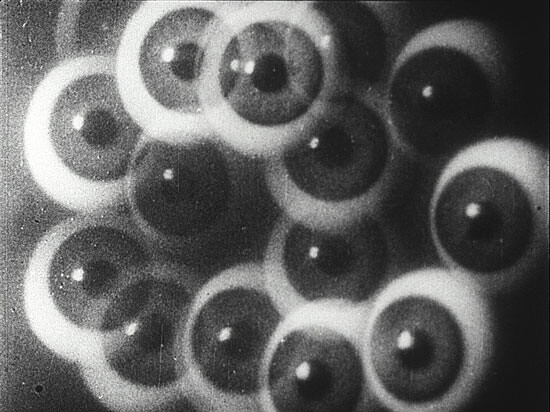

2.
Actually, there is a quite a bit of dancing in Marx. To begin at the beginning, there are his poems, written for his distant love and ballroom baroness, Jenny von Westphalen, who waited for him for seven long years while he studied to get his degree. Marx’s poetry reaches out to its promised partner with memories of the ballroom, or so one imagines, interrupted by long, if chaperoned, afternoon strolls. The verses whirl and twist, curl and rust. These are generic salon rhythms, hammered out somewhat mechanically, but the goal is earnest enough: to protect transcendent love and shared ideals from the dirty world. The muses dance as the stars dance overhead in the sky, while the real world is a theater of cavorting monkeys. Young Marx is a Fichtean idealist: the only hope against chaos, contingency, and prose is pure poetic subjectivity, which lives in that other world, the world of ideas and purely intellectual movements.
Torn by the split between the Ideal and the Real, Marx the poet soon turns to prose. First he tries his hand at an absurdist novel, called Scorpion and Felix, heavily inspired by Lawrence Sterne’s Tristam Shandy. Full of abstruse philological excursions, bombastic polemics, and obscure metaphorical collisions, there are nevertheless lyrical moments where he pauses, as if to remember his older persona. Marx’s narrator at some point finally detaches his gaze from a barroom girl’s blue eyes (as common as water in the Spree, he remarks haughtily, quoting Heine) and recalls the deep brown eyes of his beloved, where he once again sees the realm of the Ideal. Again, here, a Greek chorus dances its round, self-absorbed in its own limitations, needing no audience other than itself. It is a classical image, but one that arises like a childhood memory in a world out of joint, a world where epics—as Marx notes here for the first of many times—have become near-impossible. It was a sense of this impossibility that brought his literary activities to a standstill until he started writing as a philosopher.
The dancing stars of Marx’s juvenile poetry turn into atoms dancing in a ray of light, as he writes his dissertation on the cosmic models of the ancient materialists Democritus and Epicurus. There is something subversive in Young Marx’s interest in these Hellenistic metaphors for social motion, metaphors Hegel had largely ignored in favor of the Stoics and the Skeptics, from whose dialectic of resignation and critique of the Roman Empire he then derived Christianity. Marx, for his part, contrasts the mechanical materialist Democritus with the more dialectical Epicurus. Both explained the universe as a storm or vortex of atoms falling in the void, but in Epicurus’s version, each atom diverges or deviates in its own particular way because of its peculiar individual form. It is precisely this deviation that makes the atom’s path into a curve, and one that must now intersect with other trajectories. As a result, atoms collide, attracted and repulsed by one another, allowing the world to emerge.
Marx’s interest in Epicurus and his Roman student Lucretius is nothing literal, instead offering a kinetic metaphor for the social dynamics of the nineteenth century. The idea to look for such metaphors in late antiquity was something held in common by Hegel and his latter-day pupils, the Left Hegelians, to which Marx belonged at the time. Heir to the Enlightenment tradition of reading contemporary politics through the ideals of antiquity, the Left Hegelians were compelled by the sobering decades following the French Revolution to shift their focus from the ideals of Greek democracy to the “iron rule” of the Roman Empire and its strange mixture of liberal constitutionalism and absolutism.
It was this period that Hegel saw as crucial to the emergence of Christianity and the “modern” world spirit. The image of the Savior is a sublation (Aufhebung) of the atomized, individuated subject and its dialectical counterpart, the solitary absolute ruler. Marx counterposes this model with that of Epicurus. In that world, the Ancient Greek gods live on in the intermundia in “noble simplicity and quiet grandeur,” unconcerned with human affairs. But in the real world, the falling atoms are in constant motion, colliding and forming new community-molecules. At the same time, each atom’s divergence is a sign of its autonomy, a self-identity no less imbued with singularity or “quiet grandeur” than the noblest of gods, and one that survives even the most explosive collisions. There is something profoundly suggestive about the Epicurean and Lucretian visions of the world as a mass of atom-individuals, spinning and colliding in a vortex. We can see this vortex in pictures of the October Revolution’s crowds, in the crowds of May 1968, at Tahrir, caught in the drone-eye dispositive of power. This is no Greek choir, but rather an aleatory materialism of bodies “thrown” into processes of subjectification and encounter as strangely baseless, variable, and contingent as falling rain.
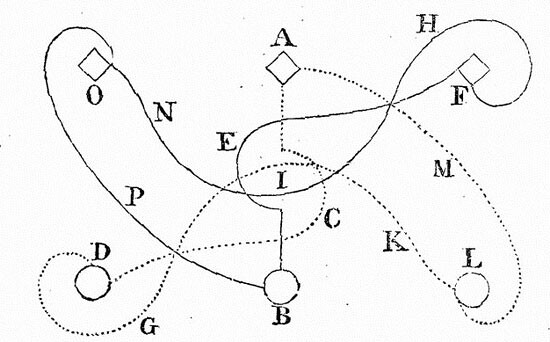

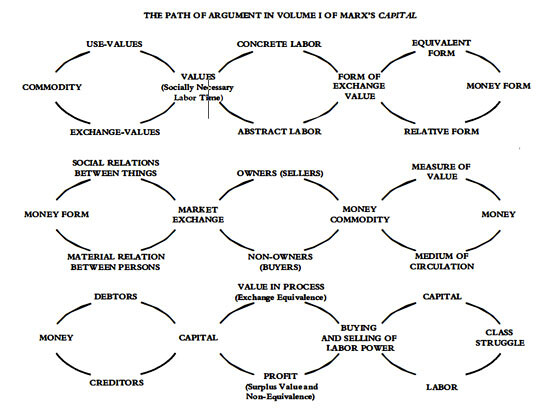

3.
Marx’s texts are not only in motion, they are about motion; something strangely kinetic survives the transition from poet to philosopher. These traces of movement are far from contingent. You might think they are only pretty words and lovely metaphors, but in fact, it is the conjecture of this text that at strategic places, there appear dance marks that anticipate Marx’s entire model of capital as an accelerating dynamic of accumulative-expropriative circulation that could, at a crucial point, become revolution.
One great example of such an anticipation is a famous line where Marx says that the goal of criticism is not just empty philosophizing, but to “make the petrified conditions dance by playing them their own tune.” This quote comes from one of Marx’s first overtly revolutionary texts, A Contribution to the Critique of the Hegelian Philosophy of Right (1843), most famous for its description of religion as an opiate for the people, and for its first mention of the proletariat as a revolutionary class. The nebulous realm of ideology is easy to criticize, Marx is saying, its fogs relatively easy to dispel, but the real conditions it obscures are petrified, frozen, motionless. That is, historically shaped, politically negotiable conditions appear as transhistorical, nonnegotiable truths. All the “music” of social warmth freezes and coagulates into institutional architecture, which can only be unfrozen if you remind it what it is for and what it is made of. Criticism must fully situate itself in the real world that it wants to change, revealing the starkest symptoms and contradictions in their undisguised form, making shame more shameful by publicizing it, teaching people courage by showing them how to be terrified of themselves. The main goal of criticism is not to reform or improve an existing structure, but to reveal all of its flaws to the point that they provoke nothing but indignation.
It is then that conditions begin to “dance,” as people upend and overturn an order of things that had only just seemed eternal. These “people” are no abstraction, taken over by a bourgeoisie eager to universalize its own values. For the first time, Marx foresees the rise of a class that really does represent the entire system’s expropriative, objectifying, alienating logic. This class has nothing, it is naked and bare, yet its existence is completely objective, overdetermined by relations between objects, or object-agents, so to speak, in which humans themselves figure in a new, uncanny objectivity as people-things.
So when “petrified conditions dance,” that dance involves both objects and people, object-agents and people-things, and even more, the human dancers have the tendency to disappear entirely as economics take the fore. Take the famous dancing table in the third or fourth paragraph of Capital, vol. 1, which proves more agile and nimble than if it were manipulated by spirit callers during a séance, once viewed from its side as a commodity, so full is it of metaphysical tricks and nuances. The table dances and turns, you see it from one side and then the other, as a collection of expended materials or as a salable piece of furniture with a certain value, or as a container of surplus labor, and all of these are different perspectives, like in a 3-D program. There are no detailed descriptions for object-animations in Sergei Eisenstein’s diary-notes toward a film version of Capital, but given his use of such stop-motion sequences in Strike and October, we could easily imagine montage and counter-montage making the table dance quadrilles with so many other physical objects. What would the mute commodities say if they could talk, and which language would they speak, if not the language of dance? Their dance would demonstrate the role reversal of human-masters and object-slaves: humans are now slave to the movement of goods and provide their own immaterial services as if they were closed things rather than open processes.
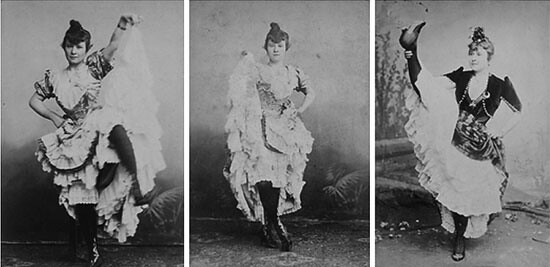

4.
There are traces of dancing in Marx’s texts, and, far from coincidental, they gel with the overall nexus of aesthetics, politics, and social dynamics in his writing. But do these traces add up? More simply put, is there any actual choreography to be found in Marx’s work? Is there any criticism of the wrong kinds of dances? Or any instruction on how to dance properly? If there is any place we should look for such a choreographic subcurrent, it is in Marx’s writing on the Revolution of 1848 and its aftermath. Again, bourgeois historiography gives us a trivial reason: according to Love and Capital, a recent biography focusing on the relationship between Jenny von Westphalen and her husband, Jenny and Marx danced their way in 1848 at a Worker’s Union Ball in Brussels, where, according to Mary Gabriel, the democratic dance floor no longer had a cordon between commoners and aristocrats, and Marx, surprisingly agile, turned and twisted his way through highly coordinated partner dances and quadrilles. So Marx danced, after all, with his ballroom baroness, on the eve of what was arguably the first failed proletarian revolution.
Marx’s reflections upon the dramaturgy of this failure would produce one of his famous and most literary texts, “The Eighteenth Brumaire of Louis Bonaparte” (1852), a profoundly performative essay on how 1848 prompted Louis Bonaparte to take power and install himself as Napoleon the Third. Marx pays great attention to how politics is acted out as a spectacle, how revolutions are performed as plays and thus accessible to a form of historical-dramatic criticism. Their history repeats itself, first as tragedy then as farce. The champions of commerce may be a sorry lot, yet they don heroic costumes taken from Ancient Greece or Imperial Rome, learning lines that remain alien until they are perfectly naturalized and the actor finally becomes his role, turning into a mad Englishman who mines gold in Ethiopia for the Egyptian pharaohs. The bourgeois revolution is a delusional historical theater, where grand epic expositions quickly turn into operettas, quickly ending in a Katzenjammer and a hailstorm of rotten vegetables. Bourgeois revolution draws its rhetorical formulas and demands from the past, while the proletarian revolution of Marx’s nineteenth-century modernity has to take its poetry from the future. And here, we could add, completing the conjecture, this poetry of the future is not theater but dance. A few paragraphs into the text’s introduction, Marx says it clearly:
Proletarian revolutions, such as those of the nineteenth century, engage in perpetual self-criticism, always stopping in their own tracks; they return to what is apparently complete in order to begin it anew, and deride with savage brutality the inadequacies, weak points and pitiful aspects of their first attempts; they seem to strike down their adversary, only to have him draw new powers from the earth and rise against them once more with the strength of a giant; again and again they draw back from the prodigious scope of their own aims, until a situation is created which makes impossible any reversion, and circumstances themselves cry out:
Hic Rhodus, hic salta!
Hier ist die Rose, hier tanze!
[Here is the Rose, here dance!]
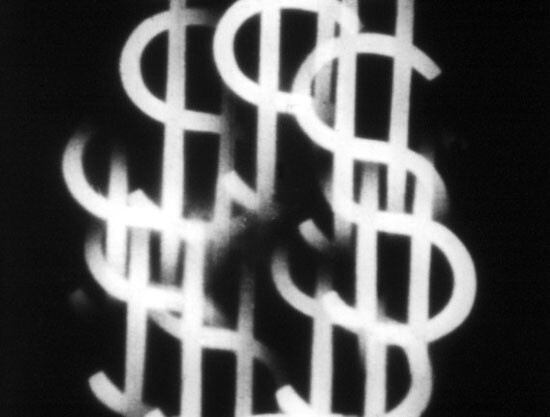

5.
That last line is cryptic, even hermetic, as suggestive as it might be for our purposes. To begin with, it is an argotization of the Latin original, then slightly changed and mistranslated. The correct quote, attributed to Seneca, is “Hic Rhodos, hic saltus,” translated as “[The island of] Rhodos is here; here is where you jump.” This is literally Aesopian language. It refers to the fable of The Boastful Athlete, in which an athlete comes to Athens and tells everybody how he jumped further than any man ever jumped and how this happened in Rhodes, where he had witnesses. Just ask them, they’re in Rhodes … And then one smart person in the crowd said something important: forget about your stories and witnesses, Rhodes is here, and here is where you jump. Talk is cheap. Now act and prove it. Perform, don’t just describe. To remain true and leave the realm of bullshitting, you must prove your ideas in reality. That is the meaning of the Latin saying, translated and collated in the sayings of Seneca.
Hegel plays with this phrase and considerably expands its meaning in the introduction to his Philosophy of Right, which is what Marx means with his cryptic reference, himself performing a backtracking of the sort he has just described, and revisiting the text where he makes the petrified conditions dance. Hegel is addressing the gulf between the imaginary realm of “boasts” and “stories” and the real world of hard facts and physical proofs. Most people would ask for such facts and proofs. But the point is that theory is a praxis, and the reason that appears in philosophy is the same reason that appears in the real world, so argues Hegel. Between them is a barrier of abstraction. How to overcome this barrier? Hegel answers with a burst of metaphorical mysticism. You must see the rose in the cross, he says. Overcome the funerary abstraction of martyrdom! See the potentiality of the messianic rebirth of a reason or spirit in a reality that oftentimes seems anything but reasonable. Everything real is reasonable, says Hegel. It sounds like an incredibly audacious statement. What does it mean?
To quote Marx’s letter to Arnold Ruge from 1843, reason has always existed, though not always in a reasonable form. To Hegel, this means that philosophy, unlike the boastful athlete’s claim, requires no external proof, just immanent consistency. Hegel says you only have to change the sentence a little, and something changes. You can change “Rhodos” to “rhodon,” and “saltus” to “salta,” and there you have it, a dance in roses. You can recognize reason as the rose in the cross, says Hegel, if you practice a certain kind of reconciliation, which grants a subjective freedom to accept what is reasonable in reality as something self-completed, even if it seems unreasonable, impure, or absurd. One can say that Hegel changes the meaning because he wants to shift it away into his own realm of mediations, and away from the direct action of physical veracity (jump) into the dancing dialectical spiraling world of antithetical proofs where negation is constantly negated (as the rose in the cross).
Marx’s agenda was to put Old Hegel on his feet, to apply the dialectical method to parliamentary politics, censorship, law, and then most famously, political economy. This is exactly what happens here. Proletarian revolutions are stumble-dances and their history, we could add with Rosa Luxemburg, is one not of victory but of defeat. They activate resignation in something like a physical release, waiting for a timed, precise, protocoled moment to emerge from the improvised maelstrom of conditions, to leap into motion from a recovered stumble in a rose dance more glorious than the rarified philosopher’s pose. Here is the rose, now dance. Even if you know you will fall. Realizing that you are about to stumble is not the same as resignation. Hegel’s philosopher can only get past the barrier of abstraction by reconciling with finished or self-limited objects of an objective reality, by accepting the “real abstractions” and material artifacts of the real world as articulations of reason. Marx flips this around or turns it inside out: proletarian revolutions start, stop, fall, and rise. They constantly backtrack, break down, and remake the very objects that Hegel wanted to accept but that many a revolutionary has wanted to simply bypass or jump over.
Lenin would write a famous early book called One Step Forward, Two Steps Back, where he would heap abuse on Martov and the Mensheviks for their endless bourgeois backpedaling. But after the October Revolution, he himself would learn the tragic meaning of its inevitability. Ironically, the title of his book would resurface as the couplet closer of a joyous Odessa song from the Thirties, when it was briefly okay to dance the foxtrot, a memory of prerevolutionary Kiev and Salomon Shkylar’s ballroom dancing school, where fat meets thin and spinster meets bachelor, and all the dances are a little stumbly and sick, a step to the left and a step to the right, one step forward, two steps back. Historical irony has it that this sounds like a short diagnosis of seventy years of Soviet experience, made from the happy-go-lucky perspective of a neofeudal present.
6.
So, in Marx’s “Brumaire,” there is the imperative to dance, to prove, to move of one’s own volition, not just to tell tall tales of permanent revolution, where only words dance around their listener’s ears. This is no subjective imperative, but an objective force, generated by the conditions themselves. You are not the inventor of the overall dramaturgy of the action, but as a subject, you must prove the audacity of your claims, not to be recognized or praised for actually performing a heroic feat, but simply because it is objectively necessary to act in an all-or-nothing situation. There are times when you can’t just sit still, Marx is saying; you have to join the dancing, even if the choreography is all wrong.
A little later on in the “Brumaire,” Marx describes such wrong choreographies. That is, he contrasts the first French Revolution with that of 1848 through increasingly physical metaphors of an imagined action on stage. The first French Revolution, according to Marx, follows an ascending path. It’s a line of people symbolizing political parties. Those at the back are the most radical and push harder than those at the front, the most progressive parties furthest to the back pushing hardest of all. At some point, Marx says, the person in front of the line is pushed aside, trampled down, and sent to the guillotine, and this process repeats until the most radical party has pushed everyone else aside. We could illustrate this through a simple exercise, but maybe we don’t have to: it’s easy enough to imagine recreating it in any situation where people are standing in line, such as outside a doorway. It’s a process of elimination, maybe completely unethical (just like the pushy person at the back of the line), but tragically inevitable, a kind of political Darwinism in which only the fittest and most radical seem to survive, only to head for the guillotine themselves.
The Revolution of 1848, says Marx, is exactly the opposite. It’s not a horizontal but a vertical line of people, like the town musicians of Bremen, where a rooster sits on the back of a cat standing on the back of a dog, standing on the back of a donkey. As this stack of people tries to move forward, it finds that motion is nearly impossible without dropping somebody. The most radical parties are the weakest, and they are on the top. When the stack of people moves forward, they fall off. First the proletarian party falls from the shoulders of the democrats, who themselves are shrugged off and dropped by the bourgeois republicans, who themselves are sitting on the shoulders of the Party of Order, which hunches its shoulders so that the republicans fall too. The Party of Order feels secure sitting on the shoulders of the armed forces, but these shoulder blades turn out to by bayonets, so the Party of Order falls too. The revolution follows a descending path; it literally falls from the sky, making all kinds of pained and apologetic faces before collapsing into spasms.
Clearly, Marx’s contrasting metaphor rearticulates the text’s big hypothetical dichotomy: the difference between an original tragedy and its farcical derivative. But something has been added in the process. There is a new participant in the action on stage: the mute, object-like body of the proletarian, set into dancing motion by the imperative of the conditions themselves. This pushes the entire action on the text’s stage away from theater and much closer to choreography. To narrate two different revolutionary dynamics, Marx prototypes a variety of Tanztheater—dancing theater—drawing upon acrobatic routines, circus acts, displays of earnest inevitability, and comic ineptitude that would only later make their way into the toolkit of modernist choreography, if not to be rejected as too literal or illustrative. It is a broken, hurdy-gurdy aesthetic worthy of the variety show, certainly no ideal of dancing harmonious bodies in the ancient past, and not the poetry of the future that Marx imagines however vaguely for the proletarian revolution. What’s more, this broken choreography is caught in the bad infinity of repetition, like a broken record or a mantra ever losing momentum. You know this in advance, but you must dance nonetheless. The fact that this Tanztheater remains legible in our own day goes to show that the aesthetic of our time is formed completely by a culture stuck in endless repetitions of moments like 1848. Again and again, we see the greatest hopes dashed as springtime turns to winter. The Party of Order mobilizes its Freikorps throng, Louis Bonaparte or Putin at its head, ready to topple the priests from their Pythian tripods and to establish the state as something hovering above society like a crowd-control helicopter. If you repeat a farce often enough, it becomes a tragedy of its own.
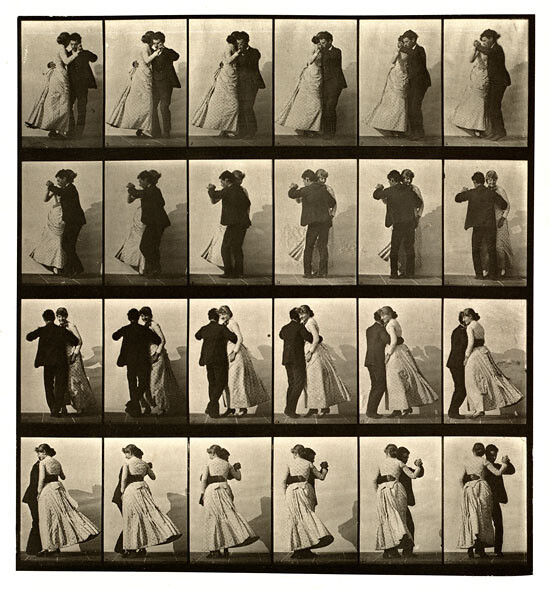

7. Epilogue
The “Brumaire” was first published in Die Revolution, a German-language journal edited by Marx’s former collaborator Joseph Weydemeyer in New York City. It provided something like international visibility to distant political developments that had dislocated the revolutionary European intelligentsia. The “Brumaire” was a text by a refugee for other refugees, all having become spectators of something grand, new, and unexpected, whether they were in Paris, London, or New York. By 1851, the year Marx probably started work on the “Brumaire,” the huge political crowds of 1848—for example, those at the Chartist Rally in Hyde Park, fixed in the first photograph in history of a mass of people—had turned into the promenading audiences of Joseph Paxton’s Crystal Palace. Giorgio Agamben wonders whether Marx might not have seen this strange new spectacle, where the commodity and its vis-à-vis, human labor, were shown to one another for the very first time. Marx was certainly already in London, and how could he have ignored these strange new mass promenades under conditions of ultimate transparency, choreographies where finally the audiences themselves were on display, as they watched the dancing tables and chugging steam engines?
What makes it so intriguing to imagine Marx gliding through the phantasmagoric, slightly blue light of the Crystal Palace in 1851 is that we know how little transparency would fill Marx’s life in the coming years. There was no space for promenading or dancing in this claustrophobic time of political emigration. Not only literally, as the Marx family moved through a succession of glorified slums, constantly in debt, all sleeping in one big bed. But also metaphorically: the space for political agency was narrow as could be. One of the only outlets was the enactment of political fracture through polemic and satire, heaping derision and abuse on enemies, rendering them impotent through the magic of words by exposing their secrets. Marx and Engels would ridicule the fates of their former revolutionary comrades from the days of 1848 in The Great Men of the Exile, a satirical book of barbs so intricate that Marx got completely caught up in writing in the genre of abuse. Perhaps the most excessive book of all in this regard is Herr Vogt (1859), a polemic against the Swiss journalist Carl Vogt, who slandered Marx as the conspiratorial leader of a communist sect. Marx wrote over seven hundred pages exposing Vogt’s subservience to the aims of Napoleon III. He nicknamed Vogt “da-da” because this was apparently his first word, and considered calling the book Dada Vogt in a move so deft and subtle that only he could understand. His friends and family advised him to stick to a more legible title and to maybe return to writing the huge and convoluted manuscript that was to eventually become Capital, vol. 1. But Marx was very busy enacting his response to the tragedy of revolution, repeated as what would be a proto-dadaist farce, if not for all the ugly bodies …
Not all of Marx’s polemics and correspondences were so desperate or divisive and so harmful as some have claimed. Some provided a reflexive space, or, in keeping with our general metaphor, a theater or dance floor of ideas. The theme of revolutionary tragedy or the tragedy of revolution resurfaced when Marx and Engels corresponded on this issue extensively after one of their favorite antagonists, Ferdinand Lassalle, the father of German social democracy, wrote the revolutionary drama Franz von Sickingen. Earnestly hoping to improve Lassalle’s rather wooden drama through ruthless critique (does this ever work?), they accused him of idealism and of misconstruing the central conflict of revolution. The revolutionary hero does not fail because his high ideals are too good and pure for a dirty reality, but because the necessity to act upon these high ideals—the result of the conditions themselves—comes into direct conflict with the immaturity of these very conditions. The revolution is both necessary and impossible, and that is its central tragedy. To show such complexity, says Marx to Lasalle, you should have been more Shakespearean and less declamatory. You can’t declare ideals and show their disenchantment in long soliloquies; you need dialogue and action to demonstrate just what a rich and contradictory social fabric both requires revolution and prevents the projected changes from actually occurring.
Something very sad and tragicomic happened to Lassalle himself, by the way: he was shot in the groin by a Romanian imposter prince whose girlfriend he had seduced, only a few months after founding the trade union that would become the bulwark of German social democracy. Marx was devastated, and all the more surprised when some turned to him to fill the void left at the center of the worker’s movement. Even though he’d basically published next to nothing in those years, all the slander had made him famous. It was then, in 1864, in the year of Lassalle’s death, that things finally started looking up. The Marx family inherited some money, some of which went for a down payment on a house on Maitland Park Road called One Modena Villas. After Marx gave a rousing speech founding the International Workingman’s Association in September of that year, his house was nicknamed the Émigré Medina, with illustrious runaways like Bakunin stopping in to build yet another ill-fated coalition. Still, it was a change of pace for Marx, who found that he had finally returned to public life and politics. As if to signal this change, the family cleared their living room of furniture and held an evening of ballroom dancing. Once again, light radiated from all the Émigré Medina’s windows …

